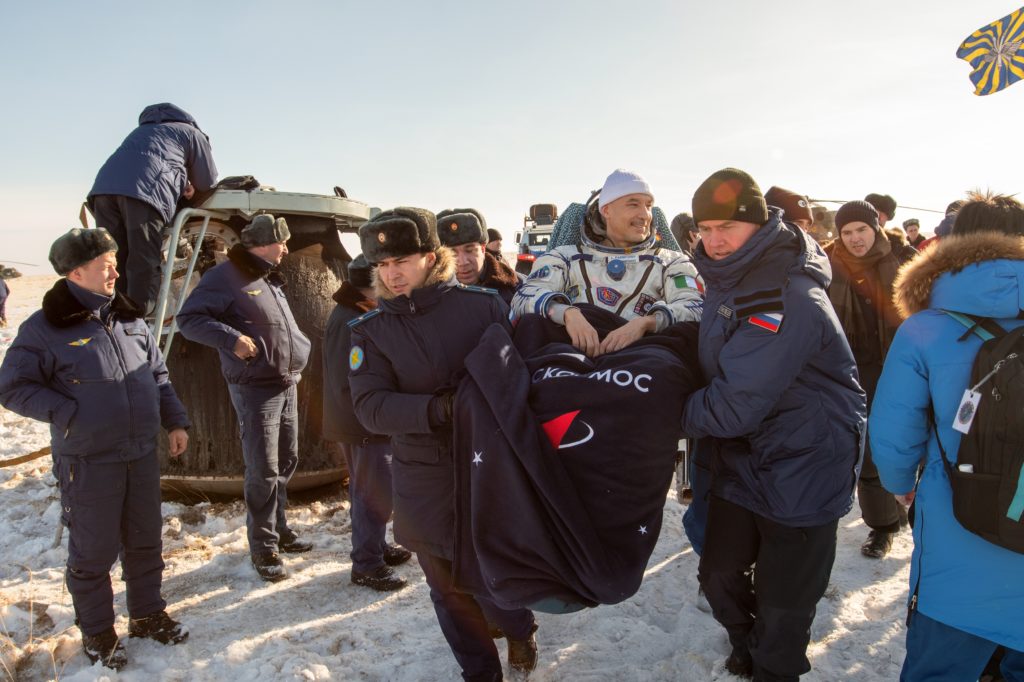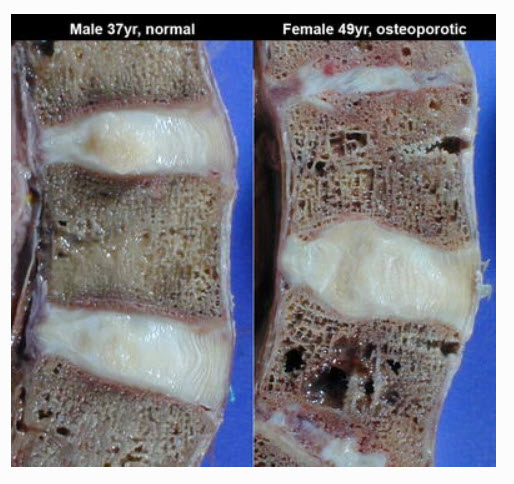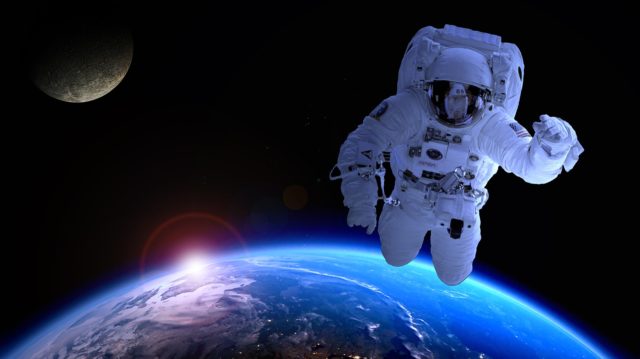Last year, I did a deep dive into zero-gravity chairs, which left me with a new appreciation of the health risks astronauts face. Among the many unique job hazards, such as excessive radiation exposure and bone density loss, astronauts experience an abnormally high rate of disk herniations.
It turns out that people with more sway (and by “sway,” I mean “money”) than me were also curious to know what the heck was going on.
The European Space Agency asked an international group of scientists to review the evidence, and figure out why astronauts’ discs were in such bad shape. Their conclusions were published in a paper aptly titled, Disc herniations in astronauts: What causes them, and what does it tell us about herniation on earth?
How Common Are Herniated Discs in Astronauts?
Pretty common, as it turns out. A paper from the U.S.’s National Aeronautics and Space Administration (NASA) revealed that astronauts were a whopping 4.3 times as likely to suffer a herniated disc than members of a control group that was matched for age, gender, and body mass index.
A full 10% (32 out of 321) of astronauts were diagnosed with at least one disc herniation during the study period. In contrast, only 3.5% of control group members (34 out of 983) had a herniated disc.
Being an astronaut can literally be a pain in the neck. Astronauts were significantly more likely than controls to develop disc herniations in their cervical spines (as opposed to their thoracic or lumbar spines).
Among astronauts, 40.9% of herniations (18 out of 44) were in the cervical region. Among the control patients, only 8.6% of herniations (3 out of 35) were in the cervical region.
Compared to controls, astronauts were more likely to end up with multiple disc herniations. Out of the 32 astronauts who experienced at least one disc herniation, 12 of them experienced more than one. Only 1 of the control participants developed multiple herniations.
Return to Earth: A Dangerous Time for Discs
If the timing of disc herniations is any indication, spaceflight uniquely predisposes astronauts to disc damage. The same NASA study referenced above examined the timing of disc herniations after astronauts returned to Earth.
Astronauts were at greatest risk immediately after reentry. In fact, 3 post-flight disc herniations (8%) happened on landing day. Another 4 herniations (11%) occurred within a week after the astronauts returned to Earth.
A total of 14 herniations (39%) took place within a year. The authors calculated that within this initial one-year period, astronauts’ risk of a disc herniation was 35.9 times higher than that of their Earth-bound peers.
Over time, the risks tapered off, although even at the end of the study (which collected data up to 29 years post-mission), former astronauts were at greater risk of disc herniation than their non-astronaut peers.
But, Why?
The NASA data shows that there does seem to be some connection between spaceflight and disc herniations. But as any college student taking an introductory stats class can tell you, correlation is not causation.
Although the numbers show a correlation, they can’t explain the mechanism behind the phenomenon. Why exactly do returning astronauts seem so prone to ruptured discs?
As of now, scientists lack the robust data needed to draw solid conclusions. But that doesn’t mean they’re clueless. They have a few compelling hypotheses, though these apply mostly to injuries in the lumbar spine. (There is less research available on cervical disc herniations, so the authors mostly refrained from speculating.)
Waterlogged Discs
One possibility is that astronauts’ overhydrated discs succumb to the mechanical pressures of bending, and herniate more easily.
This is basically why humans on earth are more prone to disc herniations first thing in the morning, when the discs are still saturated with fluid. In Low Back Disorders: Evidence-Based Prevention and Rehabilitation, McGill notes that bending stresses on the discs are 300% higher in the morning compared to the evening (pg. 131).

Image from Disc herniations in astronauts: What causes them, and what does it tell us about herniation on earth?
There are a few problems with this theory, however. First, although scientists assume that astronauts’ discs absorb water and expand during spaceflight, this has never been proven.
The assumption is based on the observations that astronauts’ spines get longer in space. Plus, studies of patients on bed rest have shown that their intervertebral discs swell. Without gravity, and without a person’s bodyweight pressing down on the disc, it’s reasonable to conclude that astronauts’ discs would absorb more water in space than they would on Earth.
But even if this assumption is correct, it doesn’t explain why astronauts’ propensity for disc injury persists so long after their return. When a person on Earth gets up in the morning, their fully hydrated discs tend to shrink quickly. McGill reports that 54% of the loss of disc height occurs within the first half hour after getting up (pg. 131).
There are some studies showing that after prolonged bedrest, it might take significantly longer for a person’s discs to shrink back down to a normal size. But the data is conflicting, and there is no data showing that astronauts’ discs remain swollen after weeks or months.
Atrophied Muscles
It’s well-known that in zero gravity, astronauts’ muscles swiftly atrophy. But it’s not just the big muscles in the legs and arms that are affected. The smaller muscles that support and stabilize the spine are affected as well.
Scientists don’t know exactly how long it takes for astronauts to recover the muscle strength they lost from their lumbar spines. But studies in bedrest patients show that muscle activity remains diminished after weeks and even months.
It’s possible that this loss of strength in the stabilizing muscles predisposes returning astronauts to injury.
Getting Up Too Soon
While crunching the numbers, scientists noticed that astronauts who returned from some missions had higher injury rates than others. In particular, Apollo and space shuttle astronauts had higher rates of herniated discs than Mir or International Space Station veterans.
Perhaps there was some difference between these missions that explained the different injury rates?
The scientists could only speculate on what, exactly, that difference was. One possibility was the disparity in astronauts’ activity immediately after returning to Earth.
Shortly after landing, space shuttle and Apollo astronauts were expected to get up and walk around, and generally do things. In contrast, returnees from the International Space Station lay in their custom-molded seat liners until they were carried out of the capsule.
The authors hypothesized that standing and bending immediately after returning to Earth (before the discs have had time to readjust to gravity, and shrink) could place undue stress on the discs, and encourage them to herniate.

Photo courtesy of the ESA.
Predisposed to Injury
By the time astronauts are strapped in for blast-off, it’s possible they’ve already accumulated risk factors for herniated discs. But exactly what these risk factors are is not clear.
Many astronauts began their careers as fighter pilots, and fighter pilots are regularly subjected to unnatural stresses, such as high-G forces and excessive vibration. Scientists wondered whether these factors, rather than anything particular to astronauts, increased their risk.
However, previous studies have failed to show that fighter pilots’ lifestyles make much difference to their risk of disc injuries.
Another possibility is that astronauts are selected for space travel based on some quality that also puts them at higher risk for disc herniations.
Some interesting observations from Finland lend credence to this idea. There, fighter pilots are selected based partly on the results of a fitness test in which recruits are put on a bike, and their heart rates are monitored. Some athletes, such as experienced weightlifters and ice hockey players, tend to do exceptionally well on this test. It’s possible that their athletic experience, rather than the stress of being a fighter pilot, is what predisposes them to injury.
This idea is intriguing, but since the evidence either way is extremely limited, it’s impossible to say anything for sure.
Other Tissue Problems
Or maybe weightlessness damages other tissues in and around the spine?
Studies in the lab and on animals have shown that spaceflight could affect the composition of intervertebral discs. However, it’s not clear how well these studies translate to humans, who live longer, and have fewer cells in their discs than lab animals do.
In humans, the relevant molecules tend to stick around for a decade or more. The relatively short time that the astronauts in the NASA study spent in space was unlikely to have a major effect on their disc composition. It was unlikely that changes would show up immediately after spaceflight, which is the period of greatest risk.
Scientists do know that astronauts lose bone mineral density in their vertebrae, and this could have an effect on their discs. The fibers in the disc’s annulus might not be able to attach as strongly to weakened bone, and the nucleus might be more likely to puncture the vertebral endplates.

Photo taken from Disc herniations in astronauts: What causes them, and what does it tell us about herniation on earth?
Scientists know that when discs swell on Earth (as they do after a good night’s sleep) the ligaments that connect the vertebrae are stretched taught. This places more force on the spine, not to mention the ligaments themselves, especially when people bend forward.
The problem is that scientists still have virtually no idea how spaceflight affects spinal ligaments, so again, it’s impossible to draw confident conclusions about their role.
What Does This Mean for People on Earth?
Unless you harbor dreams of visiting Mars, you are probably not overly worried about the health problems astronauts face. But research on astronauts still has some useful takeaways for us Terrans.
The scientists identified hyper-hydrated discs as the most likely risk factor for herniations in astronauts. (Although, as we’ve seen, there wasn’t enough data available to draw conclusions about the other hypotheses.)
With that in mind, they recommended that astronauts take care when performing activities, such as bending over, that place extra stress on the spine. They imply that astronauts might benefit from assistance when performing mundane activities, like putting on their socks.
The scientists also suggested that astronauts spend some time lying down immediately after their return from space, and limit their exercise to gentle walking for a while.
Us Earthlings regularly experience hyper-hydrated discs as well, and this is generally good advice for those times. So maybe don’t go stacking firewood or flipping tires right after you wake up. Be extra careful with any activities that involve bending over. If you need to grab the laundry basket or unload the dishwasher, try to squat or lunge, rather than bending through the spine.
If you’re antsy first thing in the morning, avoid exercises such as cycling or rowing that involve a lot of spine flexion. Stick to walking for the first hour or so.
But don’t expect your spouse to carry you out of bed, as if you were returning from the International Space Station. That may jeopardize your health in other ways.
References
- Abadie, Laurie J., Nathan Cranford, Charles W. Lloyd, Mark J. Shelhamer, and Jennifer L. Turner. 2021. The Human Body in Space. Edited by Kelli Mars. February 2. Accessed May 27, 2021. https://www.nasa.gov/hrp/bodyinspace.
- Belavy, Daniel L., Michael Adams, Helena Brisby, Barbara Cagnie, Lieven Danneels, Jeremy Fairbank, Alan R. Hargens, et al. 2016. “Disc herniations in astronauts: What causes them, and what does it tell us about herniations on earth?” European Spine Journal (Springer) 25 (1): 144–154. doi:10.1007/s00586-015-3917-y.
- Johnston, Smith L., Mark R. Campbell, Rick Scheuring, and Alan H. Feiveson. 2010. “Risk of Herniated Nucleus Pulposus Among U.S. Astronauts.” Aviation, Space, and Environmental Medicine (Aerospace Medical Association) 81 (6): 566–574. doi:10.3357/asem.2427.2010.
- McGill, Stuart. 2016. Low Back Disorders: Evidence-Based Prevention and Rehabilitation. Third Edition. Human Kinetics.
